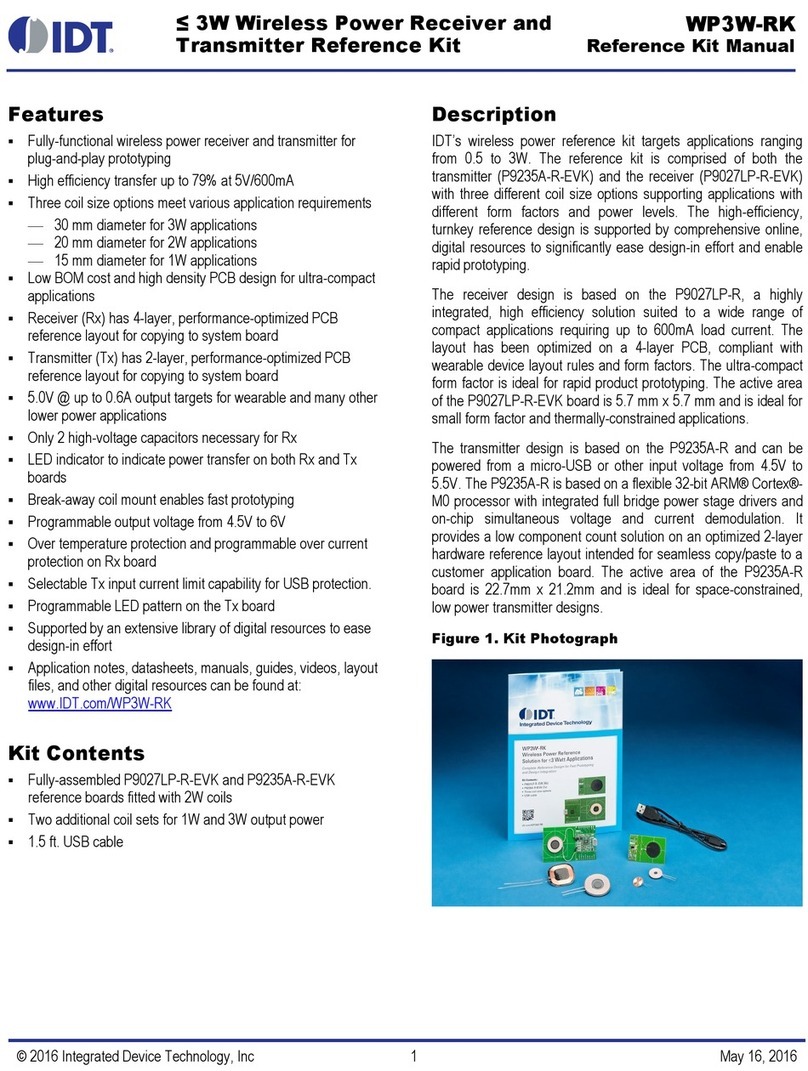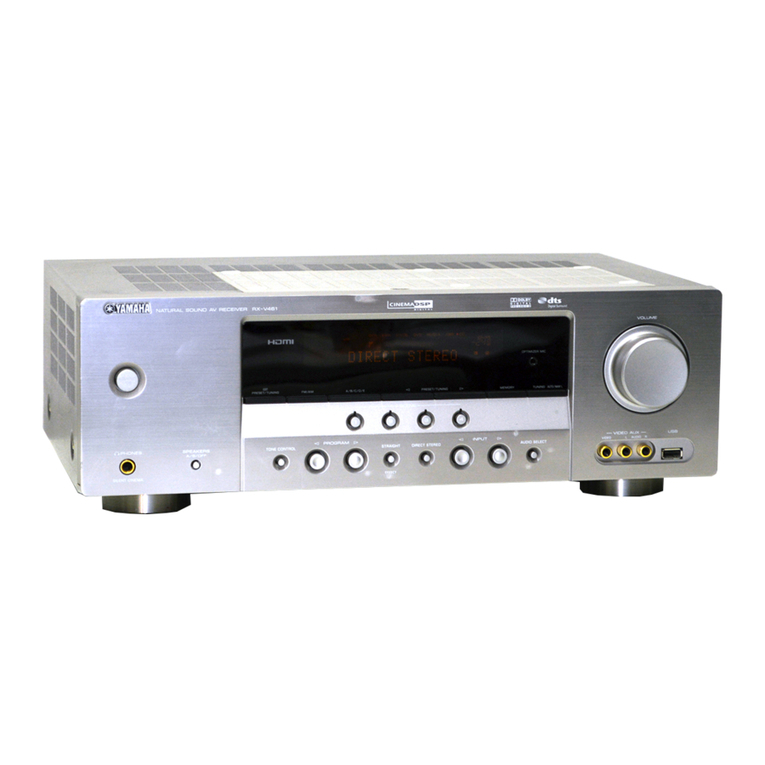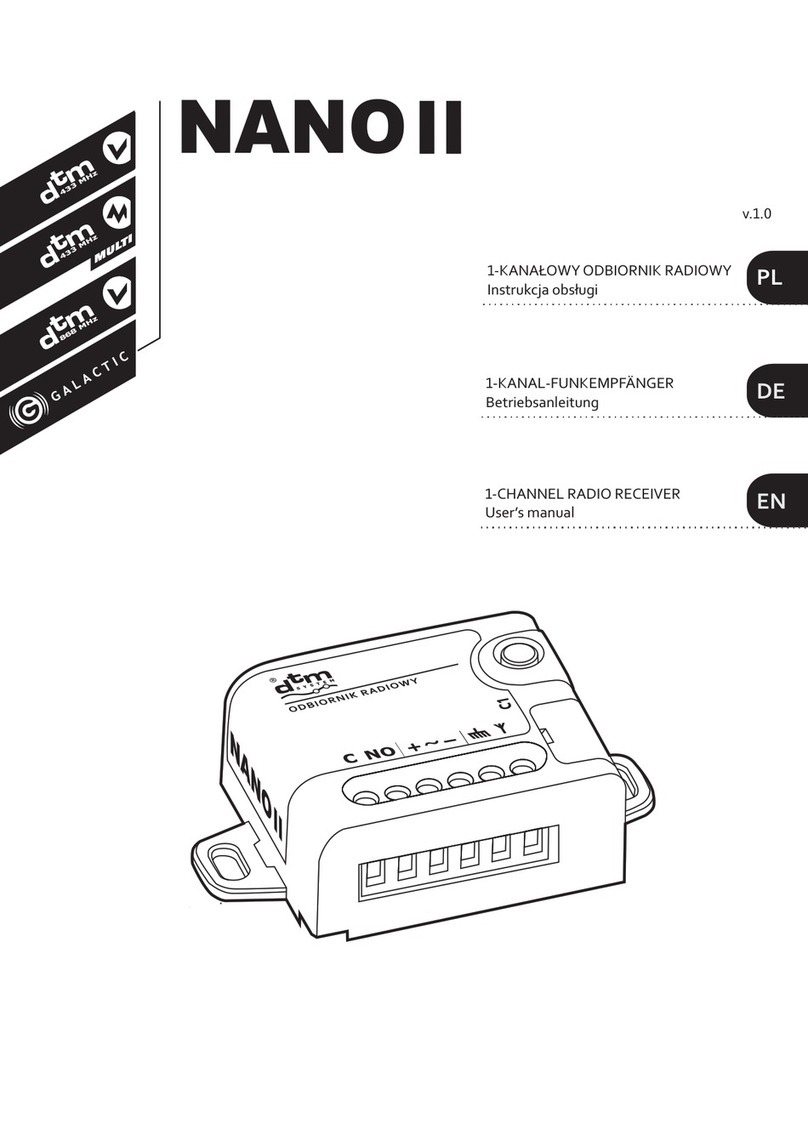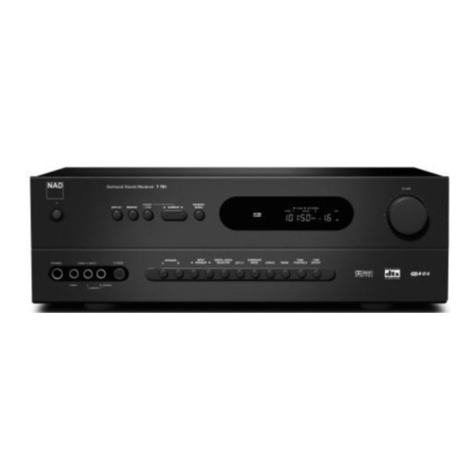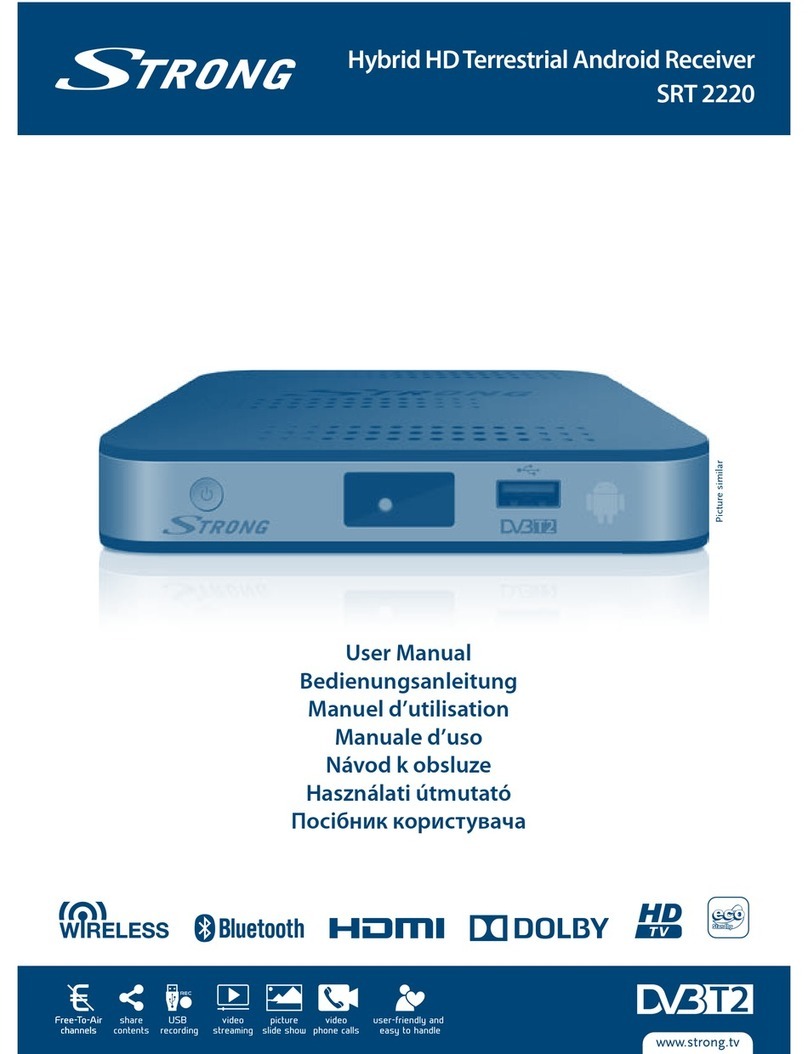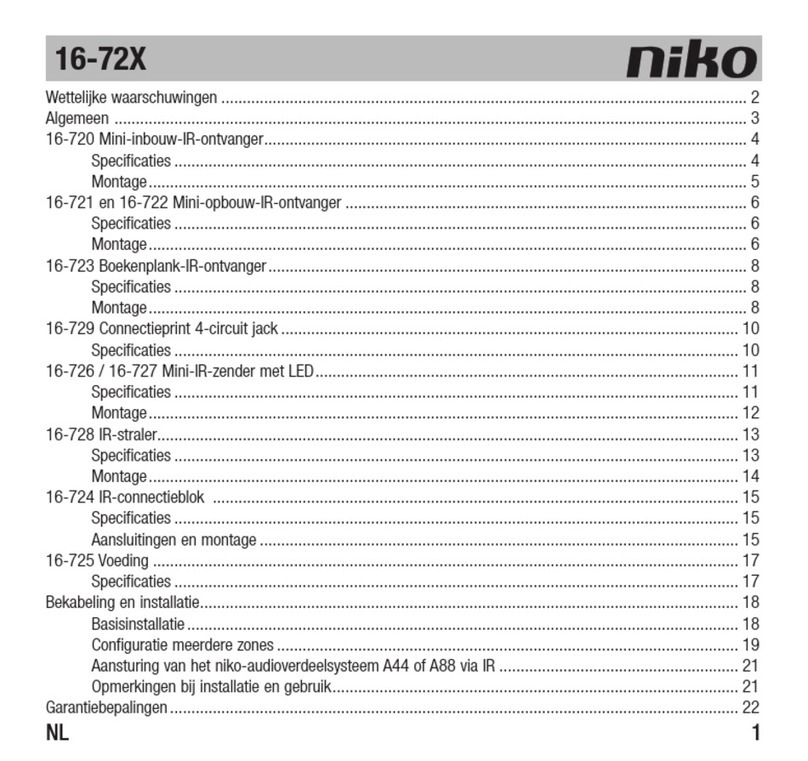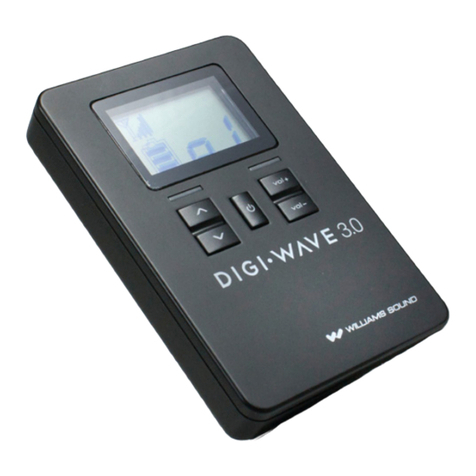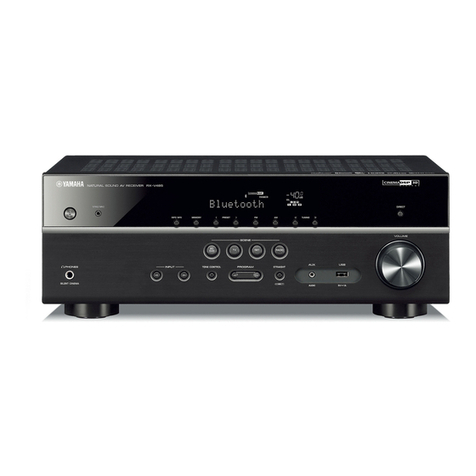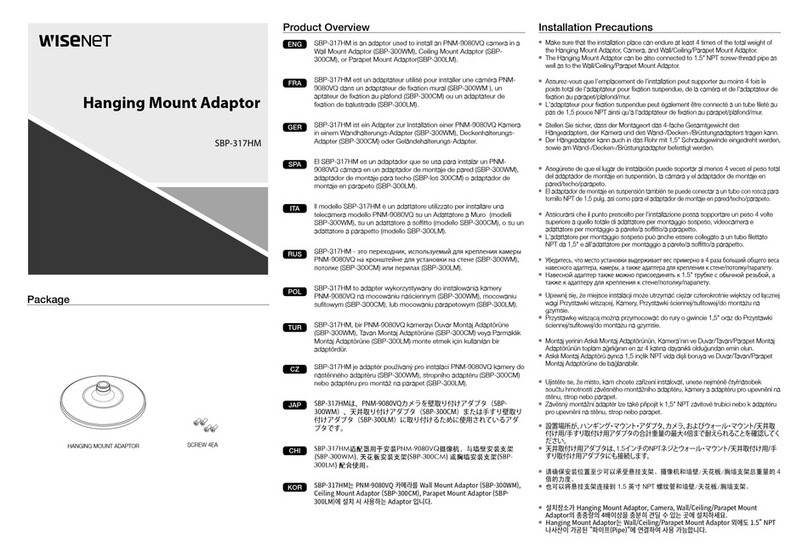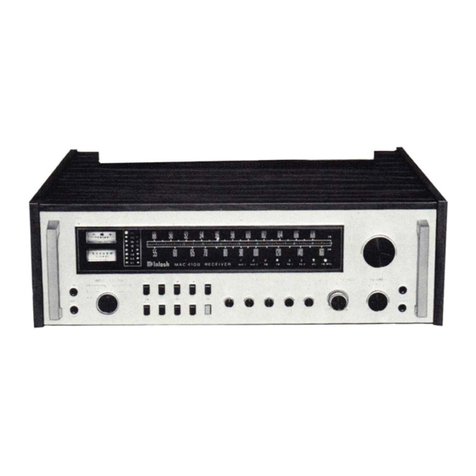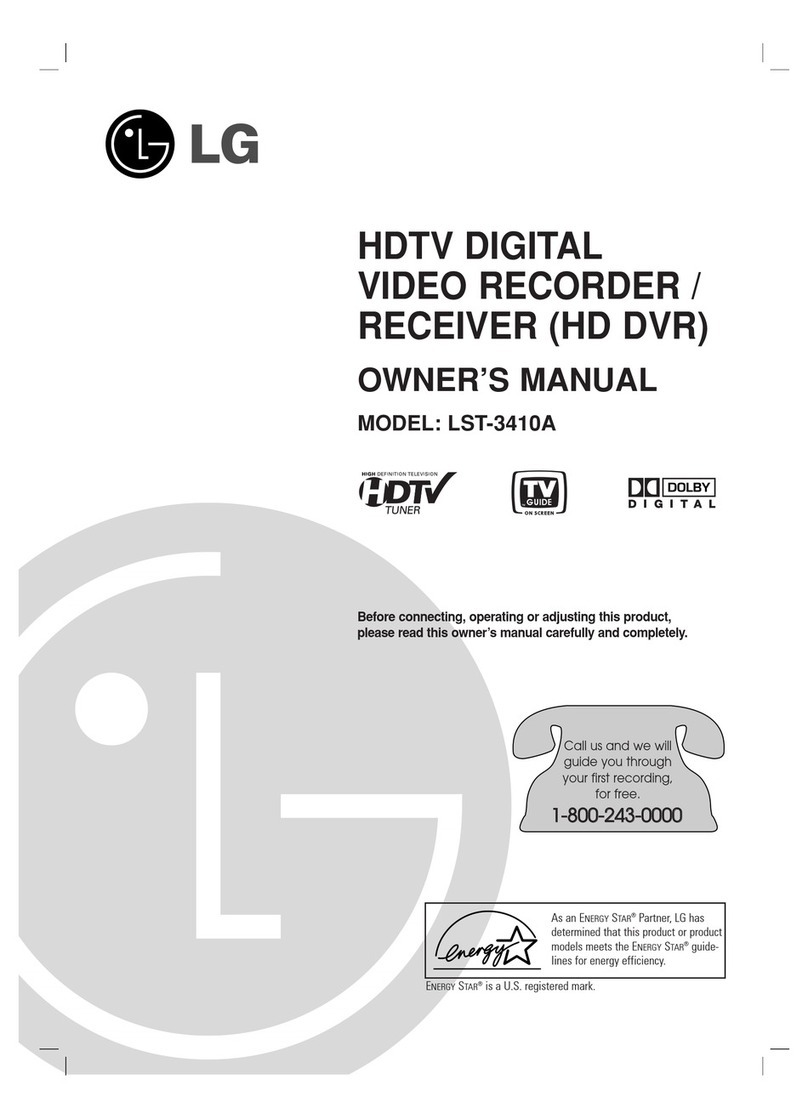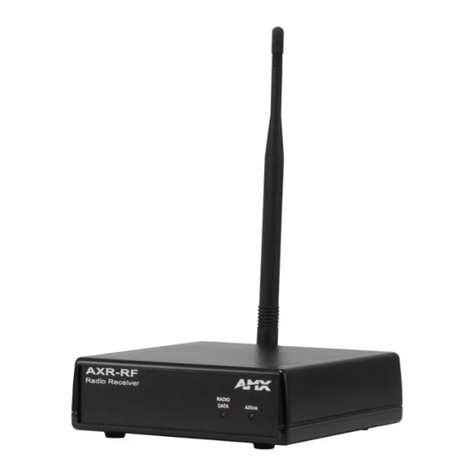IDT P9025AC Quick start guide

APPLICATION NOTE
AN-886 REVISION 08/26/15 1 ©2015 Integrated Device Technology, Inc.
P9025AC FOD Tuning Guide AN-886
Introduction
The P9025AC wireless power receiver is a WPC-compliant integrated circuit used to receive wireless power inductively. To
achieve WPC compliance, the Foreign Object Detection (FOD) feature must be enabled and tuned on both the transmitter (Tx)
and Receiver (Rx).
In any wireless power transfer system where a magnetic field is induced to transfer energy, the power transfer flux is also present
outside the Tx and Rx coils. Although this field decays proportionally to the inverse square of the distance, it is typical that these
fields intersect with other permeable materials (such as copper, steel or Lithium Ion batteries). These ferrous materials that are
unrelated to the power transfer but necessary to the product, absorb a portion of the transmitted energy and appear as a system
loss in efficiency. Other ferrous objects that are not part of the system may also be present, such as keys, coins, or other foreign
objects - and they too may absorb energy during operation. As a safety precaution, the Tx will disable power transfer whenever
the losses are measured to be higher than a pre-determined threshold.
Most wireless power systems will have some permeable materials present by design on the Tx and Rx side of the system (such
as the final product casing). This is normal and can be accounted for by tuning the FOD parameters of the system. The P9025AC
has internal OTP registers that are used to configure the FOD parameters required to ignore losses from known system design
objects and only report losses associated with actual foreign objects. Additionally, the P9025AC offers an external global FOD
offset adjustment resistor from FOD2 pin to GND. This resistor can add a positive or negative offset to the reported power by the
device based on the pre-programmed FOD curve.
For WPC-compliant systems, the loss allowed due to foreign objects is 350 mW, not including known losses due to the Tx and
Rx systems. For systems where WPC compliance is not a requirement, FOD can be programmed to accept losses greater than
350 mW, or can be disabled completely.
Getting Started
The P9025AC has two external resistors for changing (tuning) the received power value that is reported to the Tx. The resistor
from pin FOD1 to GND is used to select one of several pre-programmed banks of FOD values. The resistor from pin FOD2 to
GND is an additional offset adjustment and shifts the entire reported received power curve up or down. Details on how to adjust
these values is explained later in this guide.
Before starting to tune the system FOD, careful consideration should be taken to determine to what degree FOD is required in
the application. When WPC compliance is not required, increasing the FOD loss threshold or disabling FOD completely can
significantly reduce the effort and costs associated with tuning. The three options are as follows:
Option #1: Disabling FOD – some applications will not need any form of FOD, such as fixed location chargers. This
eliminates the need for tuning completely. Skip to the Disabling FOD section for details on how to disable FOD.
Option #2: “Good Enough” FOD – some applications want FOD to a degree, but do not require a strict FOD detection
threshold. This is typical of systems where the Tx and Rx are paired, and where WPC-compliance is not necessary. This
type of tuning can be accomplished in a short time with just a few simple measurements and two external resistors. This
guide will instruct users on how to achieve this.
Option #3: WPC-compliant FOD – this is for applications that require Qi Certification from one of the WPC certification
centers. This typically requires precision tuning with the help of an FOD expert and special tools. This degree of tuning falls
outside the scope of this guide. IDT will refer customers to a third party support team for tuning and pre-certification testing.

P9025AC FOD TUNING GUIDE 2 REVISION 08/26/15
AN-886
FOD Tuning Overview
The WPC Foreign Object Detection (FOD) method involves continuous measurement by the Tx and Rx devices independently.
The Rx reports the measured output power to the Tx through the wireless communication. The Tx then compares the values to
the input power to check if an excessive amount of power is being lost somewhere in-between. If the product is part of a
WPC-compliant system, the acceptable foreign object losses in excess of the known losses is 350 mW or less. For
non-compliant systems, the acceptable losses can be higher, or disabled all together.
During system development, the known Tx power losses need to be determined. Some power is consumed by the transmitter
in the form of digital processing, losses in the DC to AC inverter, passive components, and metallic objects needed for the product
(such as cases, screws, copper foil). These losses are inherent to the specific Tx and are determined by measuring the Tx
against a calibrated Rx. These known losses should be subtracted from the calculation when the system checks for a foreign
object. These losses will be referred to as TXLOSSES:
where,
Vin = input voltage to the Tx controller IC (measured at REG_IN pin on P9038)
Iin = input current to the Tx module (measured across RSNS (R2) on P9038)
TXLOSSES = Sum of power consumed by Tx system to generate B-field for power transfer and decode communication
packets
Respectively, the Rx device measures the power that it is receiving (i.e. delivering to the load) and reports that value to the Tx
module. Since the Rx circuit and system also consume power during operation, these fixed losses must be added to the reported
received power value so that they are not considered as foreign object losses in the transmitter's calculation. Unfortunately, the
fixed losses are not linear with respect to the load current. Therefore, the P9025AC device has been pre-programmed with
multiple FOD curves that can be selected using the resistor on pin FOD1. These FOD1 settings are intended to include the Rx
operational losses and other end-product specific metallic material losses, such as the receiver's casing. The reported power
calculation is as follows:
where,
OUT = output voltage of the Rx device
Iout = output current from the Rx device
RXLOSSES = Sum power consumed by Rx product to rectify B-field for power delivery determined by the FOD1 bank
selection and the FOD2 resistance to GND.
where,
5V= basis voltage of the Rx device power reporting calculation
Iout = output current from the Rx device
mcf(region) = programmed slope adjustment of FOD tuning by power region
bcf(region) = programmed offset adjustment of FOD tuning by power region
FOD2 Offset = Additional offset set by FOD2 resistor (sometimes referred to as Pa)
The regions vary based on the output current. There are 5 regions, so there are 5 mcf values and 5 bcf values that need to be
programmed in order to report correct RXLOSSES value to the Tx based on the selected FOD1 bank.

REVISION 08/26/15 3 P9025AC FOD TUNING GUIDE
AN-886
Once the FOD1 trim settings are determined and FOD2 offset is incorporated, the reported power by the Rx (RxPOWER_FOD) is
now a total power value as opposed to just the power delivered to the load. This will allow the FOD calculation to be accurate
based on the operating power levels of the Tx module and the Rx module when no foreign objects are present.
where,
-350mW < FODPDIFF < 0mW for 0 to 1A load levels
Pre-programmed Banks (FOD1)
The P9025AC device is pre-programmed with FOD default curves in an effort to expedite and simplify development of wireless
charging systems. These allow end-users the option of using a resistor to select the FOD curve that mostly closely matches the
end product. IDT derived these particular curves based on existing systems with a variety of permeable materials near the Tx
and Rx coils. The following curves are the default values stored in the FOD banks of the P9025AC-RNDGI device (refer to the
P9025-R-EVK FOD Calculator.xlsx for exact values).
The Rx Reported Received Power vs. Load Current graph is an indication of the power lost due to the electrical operations
required for the Tx and Rx to function as the load current changes. As you can see, the reported Power received is approximately
1W when no external load is applied and can exceed 7W when 5W is delivered to the load.
Figure 1. P9025AC-R Default FOD1 Curves Banks 1- 7, 10 (Maxes out power reported to essentially disable
FOD). Banks 8 and 9 are Reserved for Custom Trimming to be Performed by an FOD Expert using
Specialized Equipment.
In order to program the P9025AC to properly account for losses due to foreign objects, the Rx Reported Received Power vs.
Load Current curves must be understood. These curves display the transmitted power of the Tx including the power delivered
to the load. The Tx device will monitor the power level that it is consuming (by measuring the RMS input current and DC input
voltage), then compare this result to the reported received power level (the point on each curve based on selected bank). In order
to be WPC-compliant, the Tx measured power can be equal to or less than up to 350 mW less than the Rx reported received
power across the load spectrum.

P9025AC FOD TUNING GUIDE 4 REVISION 08/26/15
AN-886
Typically, some offsets are included in the reported received power value in order to avoid false FOD disconnects due to coil
misalignments. These offsets are incorporated by shifting the FOD curve up above the actual power in order to guarantee that
the Tx power level and the reported power levels are within the 350 mW threshold even when the Rx is off-center by 5 mm from
the optimal alignment location in any direction accept the z-direction. The bank used to determine the reported power vs. output
load current is selectable by installing a resistor from pin FOD1 to GND. The following table lists the resistance (±1%) needed
to select each internal FOD1 bank:
Table 1: FOD1 Bank Selection Table
Power offsets are described in more detail in the next section.
Global Offset (FOD2)
The P9025AC offers an additional layer of flexibility that allows a global power offset to be added to the RXPOWER_FOD reported
level. This offset is applied by connecting an external resistor from pin FOD2 to GND and directly affects the received power
level that is reported to the transmitter across the load spectrum. The adjustment range allows for ±300 mW shifts to the reported
power value at all load levels across the spectrum. The magnitude of the FOD2 constant offset adjustment is dependent upon
the value of the FOD2 resistor and is added to the output power. The valid range for the FOD2 offset resistance is 20kup to
open circuit where 20 kresults in a +300mW offset and open (FOD2 pin floating) results in -300mW offset.
The following graph indicates the theoretical FOD curve needed to be WPC V1.1.2 Pre-Certified with the P9025AC when using
the recommended layout and bill-of-materials in the P9025-R-EVK reference kit and shows the reported power shifts that would
occur at the positive and negative ends of the FOD2 adjustment range.
Figure 2. P9025AC-R-EVK with Wurth FOD Curve (Bank 1), ± FOD2 Global Offset Minimum and Maximum
Variation Allowance
Bank# 1 23456789 10
RFOD1(kΩ) 150 to open 113 97.6 75 64.9 56.2 49.9 45.3 40.2 20 to 33.2

REVISION 08/26/15 5 P9025AC FOD TUNING GUIDE
AN-886
The P9025AC has a 1.8V reference connected by a current mirror to the FOD2 resistor which reflects the current to an internal
ADC. The external FOD2 resistor creates a voltage at the ADC input and the offset is proportional to the resistance to GND at
the FOD2 pin. The ADC input voltage (cannot be measured externally) can be determined using the following equation:
Next the Power received reported value is shifted proportionally to the VFOD2 voltage. At 0.9V, the offset is 0 mW. At 0 V, the
offset is -300mW and at 1.8V, the offset is +300mW. The Rx reported received power shift can be calculated using the following
equation:
where,
VFOD2 is found using equation 6
The VFOD2 scaling factor is 333.333 (unit considered as mA)
Table 2: FOD2 Global Offset Example Values based on RFOD2 Resistance
The above table is for reference to validate accurate calculations and check results. Additionally, the following curve may be used
to estimate the appropriate FOD2 resistance to achieve the required additional offset shift:
FOD2 Resistor (kΩ) VFOD2 Voltage (V) Global Offset (mW)
25 1.8 300.00
35 1.28 -128.57
50 0.90 0.00
100 0.45 -150
250 0.18 -240
350 0.128 -257
OPEN 0 -300.00

P9025AC FOD TUNING GUIDE 6 REVISION 08/26/15
AN-886
Figure 3. P9025AC FOD2 Global Offset Shift vs. FOD2 Resistance to GND
Option #1: Disabling FOD
Disabling FOD can be done with a few simple steps:
First, P9038 Tx needs to be configured with GPIO4 connected to LDO2p5V with a resistor so that the pin is always at 2.5V during
startup. This will disable the P9038 from shutting down due to changes from expected input power levels that deviate from the
reported power value from the Rx.
Second, the FOD1 pin on the P9025AC Rx should be connected to GND. This will have the effect of selecting the
pre-programmed Bank 10, which maxes out the reported power level. If using the P9025AC-R-EVK reference board, this can be
accomplished by placing a zero-ohm resistor in R4.
Third, the resistor from FOD2 to GND on the P9025AC Rx should be set to 20k. This will add +300 mW of offset to the reported
power value and make it so that FOD-invoked shutdowns cannot happen when using the P9038, and will be very unlikely when
using the P9025AC with other WPC transmitters. If using the P9025AC-R-EVK reference board, this is resistor R5.

REVISION 08/26/15 7 P9025AC FOD TUNING GUIDE
AN-886
Option #2: “Good Enough” FOD
In many applications, it is not required to be WPC-compliant. This is especially true for applications where the transmitter and
receiver will be designed as a pair, and no guarantee for interoperability with other devices is needed. By removing the 350 mW
hard requirement for foreign object losses, it provides tremendous flexibility to use and adjust one of the pre-programmed FOD
curves. This eliminates the need for costly testing and device configuration.
To aid in the selection of the most appropriate FOD curve and make offset adjustments, a working spreadsheet is available. The
spreadsheet is titled P9025-R-EVK FOD Calculator and can be downloaded at www.idt.com/P9025AC-R-EVK. The spreadsheet
should be used in conjunction with following these steps:
1. Create a bench setup that allows for accurate current measurements and voltage measurements of the system under
design.
2. P9025AC measurements should take place directly across the OUT capacitor and the current should be measured as
it leaves the P9025AC OUT node (see Figure 4).
3. P9038 current measurements should take place at any point along the input power line feeding the sense resistor and
across the REG_IN pin capacitor (see Figure 4).
4. Find the optimal alignment location by placing the Rx on the Tx and moving around the Tx surface until the input current
to the Tx reaches the minimum RMS value while the Rx is connected to the Tx and the output is present and stable (This
should typically occur at the point when the center Rx coil opening (inner diameter) is directly above the center of the
opening in the Tx coil (inner diameter).
5. Move the Rx coil exactly 5mm away from the Optimal Alignment Location in any direction.
6. Measure and record the input current, input voltage, and output voltage while sweeping the output load from 0 mA to
1000 mA in approximately 50mA steps. While doing so, fill in Columns B, C and D at each load current level listed in
column A on the Measurements tab. The input and output power levels will be calculated for you. Ideally, this should be
performed with the final assembled wireless Tx and Rx products being built and the opposite Tx or Rx IDT EVK. Enter
these values in the left hand input table labeled First data set.
7. Move the Rx coil exactly 5mm away from the Optimal Alignment Location in any direction that is 90? Clock-wise or
counter-clockwise from the direction chosen for step 5. For example, if the Rx was move +5mm in the x-direction in step
5, move the Rx ±5mm in the y-direction in step 7. Repeat step 6, with the exception of entering the data in the right hand
data entry table (Columns: N,O, and P) labeled Second data set.
a. For fixed alignment systems, enter the same data collected in step 6 in the second table indicated in step 7 (enter
the same data in both tables, First and Second data sets are identical).
8. Make sure that no cell in the Output Voltage (V) columns D and P turns RED in after entering all the data. If the Output
Voltage columns turn RED the system is not performing properly and the new product should be debugged to determine
the source of the excessive losses and they should be corrected before proceeding.
9. Check the fit of the resulting input power curve from of the system under test to the default curves displayed on the
FOD_Curves tab of the spreadsheet or check the 'Delta from Pre-programmed Banks' table on the Measurements tab
for a column that has very few or no red cells. (see Figure 5)
a. If all the cells in at least one bank are within -350 mW of the difference of input power and reported power, the cells
will be white with black text (no red). That is the best fit FOD curve bank and should be selected. The necessary
FOD2 offset value will be displayed in green below the table and the appropriate FOD2 resistor should be installed
to result in that offset (if no FOD2 cell is green, it means the required offset shift is beyond the trim range).
In this case, use the determined FOD1 bank that has the green highlighted number beneath the Bank # by setting
the specified FOD1 resistance (found above the Bank#). Then, set the FOD2 resistor value as shown for that bank.
None of the available pre-programmed Banks meet the FOD thresholds at all load levels.
b. If no banks are free from red cells (or cells that are white with orange text), that means one or more points spanning
the load has a variation greater than the input power transmitted or less than -350 mW from the input power
compared to the pre-configured curves. The engineer has two options: look for a "good enough" fit where the
variation exceeds 350 mW, or, come up with a custom set of values that will need to programmed into the device.

P9025AC FOD TUNING GUIDE 8 REVISION 08/26/15
AN-886
When the Bank# columns are comprised of black and orange numerical values, this means that the error for that
bank is above target by more than 350mW after the necessary FOD2 Offset shift has been implemented. This
means that foreign objects are expected to be capable of consuming more power than the WPC specification allows
at each load level that corresponds to an orange texted cell. In this case, the spreadsheet predicts the best Bank
to use regarding all load levels and will indicate the recommended bank by highlighting the suggested FOD1 and
FOD2 resistances to use under the Bank# row. The listed values in the FOD1 section are the largest reported power
error contained within the best fitting Bank and the system designer should determine if the error is acceptable for
the product under design.
To determine custom values, Bank 8 or Bank 9 can be adjusted using the Hexadecimal values on the PR_Banks
tab until the selected bank column no longer has red cells. IDT will refer customers to a third party support team for
programming the P9025AC with a custom FOD configuration.
Figure 4. Power Measurement Connection Diagram
Figure 5. P9025AC_FOD_Calculator.xls Measurements Entry Tab (Second data set not shown but must also

REVISION 08/26/15 9 P9025AC FOD TUNING GUIDE
AN-886
be filled in)

P9025AC FOD TUNING GUIDE 10 REVISION 08/26/15
AN-886
Option #3: WPC-compliant FOD
In order to program the FOD parameters with a high degree of accuracy, an AVID Technologies system (Qi FOD Transmitter /
Receiver) or Nok9 system (CATS LP100 MDT & BST Reference Testers) should be used in conjunction with calibrated lab
equipment. These laboratories offer excellent Qi compliance FOD determination services and they are recommended.
Due to the cost associated with these items or services, it is recommended to consider Option #2 if WPC certification is not a
hard requirement. IDT will refer customers to a third party support team for tuning and pre-certification testing.

DISCLAIMER Integrated Device Technology, Inc. (IDT) and its subsidiaries reserve the right to modify the products and/or specifications described herein at any time and at IDT’s sole discretion. All information in
this document, including descriptions of product features and performance, is subject to change without notice. Performance specifications and the operating parameters of the described products are determined
in the independent state and are not guaranteed to perform the same way when installed in customer products. The information contained herein is provided without representation or warranty of any kind, whether
express or implied, including, but not limited to, the suitability of IDT’s products for any particular purpose, an implied warranty of merchantability, or non-infringement of the intellectual property rights of others. This
document is presented only as a guide and does not convey any license under intellectual property rights of IDT or any third parties.
IDT’s products are not intended for use in applications involving extreme environmental conditions or in life support systems or similar devices where the failure or malfunction of an IDT product can be reasonably
expected to significantly affect the health or safety of users. Anyone using an IDT product in such a manner does so at their own risk, absent an express, written agreement by IDT.
Integrated Device Technology, IDT and the IDT logo are registered trademarks of IDT. Product specification subject to change without notice. Other trademarks and service marks used herein, including protected
names, logos and designs, are the property of IDT or their respective third party owners.
Copyright ©2015 Integrated Device Technology, Inc.. All rights reserved.
Corporate Headquarters
6024 Silver Creek Valley Road
San Jose, CA 95138 USA
Sales
1-800-345-7015 or 408-284-8200
Fax: 408-284-2775
www.IDT.com
Tech Support
www.idt.com/support/technical-support
Revision History
Rev. 08/10/2015 Initial release
Rev. 08/26/2015 Fixed typo in Equation 4
Table of contents
Other IDT Receiver manuals
